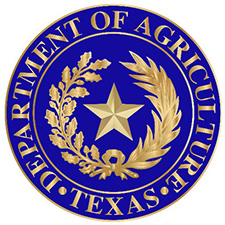(AG Insider) Farmers and ranchers will need billions of dollars in coronavirus aid beyond the $16 billion in cash that USDA plans to disburse by June, 28 senators said in a letter to President Trump. At the same time, a band of university economists said USDA aid is weighted 4-to-1 toward producers and that the agency “should arguably show an equivalent amount of creativity to help the broader spectrum of struggling Americans with food needs.”
“Paying producers for market losses is from the standard response playbook but the current crisis likely demands different and additional response priorities,” wrote the economists in pointing to huge job losses due to the economic slowdown and estimates of a spike in poverty while food banks and other charities are overrun with requests for help.
USDA plans to buy $3 billion in food for donation to charity compared to $16 billion in payments to farmers, drawn from the $2 trillion coronavirus package enacted at the end of March. An additional $14 billion will become available to “USDA’s bank,” the Commodity Credit Corp., after it submits a June 30 financial statement. The economists, writing at the farmdoc Daily blog, said “every dollar spent from the CCC limits USDA’s ability to purchase and distribute food in the depths of this crisis.”
In a letter to Trump, the senators said, “We believe that a significant portion of these dollars should be used to ensure that [agricultural] needs are met, even if the payments must be paid in tranches.” The letter, released on Friday, was supported by 13 farm and agribusiness groups. The letter also argued against limits on payments to individual livestock, dairy, and fruit, vegetable and nut growers.
The USDA has yet to reveal the rules it will use to distribute the $16 billion. It is expected to propose payment limits of $125,000 per commodity and $250,000 per farmer or entity. The only people ineligible for aid would be operators with an adjusted gross income above $900,000 and who get more than 25 percent of their income outside of agriculture.
Those limits would be unduly low, said the senators. Livestock producers usually focus solely on cattle, hogs, dairy or poultry rather than a mix of food-bearing animals. Specialty crop growers often harvest many crops but have high costs per acre, said the senators.
The economists stressed they were not minimizing the losses faced by farmers or suggesting that the USDA was not helping unemployed Americans. “The point is to raise questions about priorities,” they wrote. “There are sirens blaring for urgent efforts on food needs in the pandemic — lost jobs and poverty — and for the kid of creativity that USDA has used to make payments to farmers.”
Just as the USDA used the broad powers of the CCC in 2018 and 2019 to send a combined $23 billion in cash to producers, CCC has the authority to procure agricultural commodities to provide relief and meet domestic requirements, said the economists. School kitchens, idle because of coronavirus closures or operating at low levels to provide food to low-income children, “hold real potential for helping distribute food … a reminder of the massive machinery that could be mobilized to move food from fields to tables helping to avoid waste, losses and hunger in this time of crisis.”
The Produce Marketing Association estimated that $5 billion worth of fresh fruits and vegetables have gone to waste with the virtual shut-down of the food service sector, reported The Hill newspaper. The cooperative Dairy Farmers of America estimates milk dumping at 2.5 million to 3.7 million gallons a day. The National Pork Board held a webinar on Sunday that discussed various methods for euthanizing large numbers of hogs.
Today’s Quick Hits April 27, 2020
U.S. issues meat plant guidance (FERN): The CDC and the Labor Department released coronavirus guidance for meat plants that encourages workers to be “placed at least six feet apart, if possible,” with barriers between workers if possible, and the use of face masks in addition to social distancing. The interim guidance calls for plants to write Covid-19 control plans that include plenty of hand sanitizer stations.
USDA asks bids to fill food boxes (The Packer): The Agricultural Marketing Service requested proposals by Friday for its plan to supply pre-filled boxes of produce, dairy and meat products to charity, with purchases of $300 million a month for six months.
Three more states get P-EBT (USDA): California, Connecticut and Wisconsin received USDA approval to operate a Pandemic Electronic Benefit Transfer program to help low-income families whose school-age children lost access to free or reduced prices meals due to school closures. Vermont’s plan to allow online purchase of groceries by SNAP recipients also was approved.
Cattle stay on the range (Drovers): Only 1.56 million head of cattle went into U.S. feedlots during March, the lowest total for a March since records began in 1996, and there were 5-percent fewer cattle in feedlots on April 1 than a year earlier, according to the monthly Cattle on Feed report.
Limits on guestworkers possible (Washington Post): Stephen Miller, a senior White House policy adviser, told Trump supporters that measures were under consideration to restrict guestworker programs because “the most important thing is to turn off the faucet of new immigrant labor.”











